Getting people to notice your ad on the socials is not easy.
There are too many stimuli and too many brands fighting for the attention of your potential customers.
So before you spend a penny on TikTok, Meta or LinkedIn ads, make sure you understand the principles of persuasion.
A well-crafted ad will grab attention and hold it long enough to persuade your prospects to click on the link that takes them to a product sales page.
Too many social media ads fail to attract attention. It’s sad to see people throwing their money away.
That’s why I want you to learn the techniques the advertising pros use to create ads that get real results.
Knowing these principles will make it easier for you to create ads and SM posts that will make your prospects stop scrolling and pay attention.
Let’s see them all.
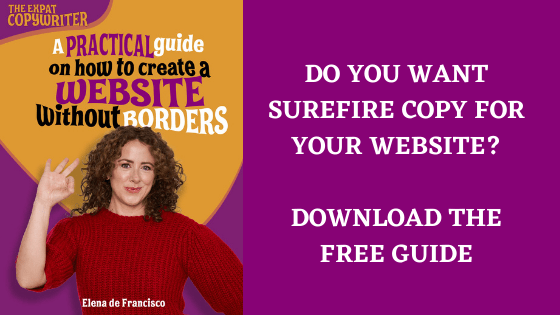
The (almost) foolproof formula for creating attention-grabbing social media ads
I learnt this formula from the copywriting group I belong to, The Fix, the teachers like to mess around so they called it D.I.E.
It’s a great name because it’s memorable, and that’s precisely what we copywriters are always looking for: Words that evoke emotions that stick in people’s minds.
D.I.E. stands for DISRUPT – INTRIGUE – ENGAGE
We will look at this formula step by step and with examples so that you can see very clearly how to apply it to your ads and posts on the socials.
How to shake people so they stop at your ad
We are so blinded by so much content and silly videos that almost nothing surprises us anymore.
But surprise is important to shake people out of their lethargy and make them pay attention.
That’s why you need to do everything you can to surprise your prospects with your ad.
And this is how you do it:
✅With a statement, promise, question or image that is completely unexpected or out of the ordinary.
You need to disrupt the pre-determined schemas that people have in their heads so that their brains get a (metaphorical) shock and pay attention.
It isn’t easy to come up with that unexpected or unusual idea, but if you want your ad to get noticed, you have to take the time to find it.
Don’t worry, in this copy lesson I explain several exercises you can do to get to that unusual idea.
They don’t have to be super clever ideas, often the simplest ones work best.
What can help you arrive at your big idea is to think about the end result your prospects want which your product can deliver.
For example, if you sell after-school tutoring, an ad that would work well would be a child saying:
– Dad, I passed!
That’s every parent’s dream: their children doing well at school.
Let’s look at another example to make it clear.
One that proves that you don’t have to spend a lot of money on dazzling images or videos.
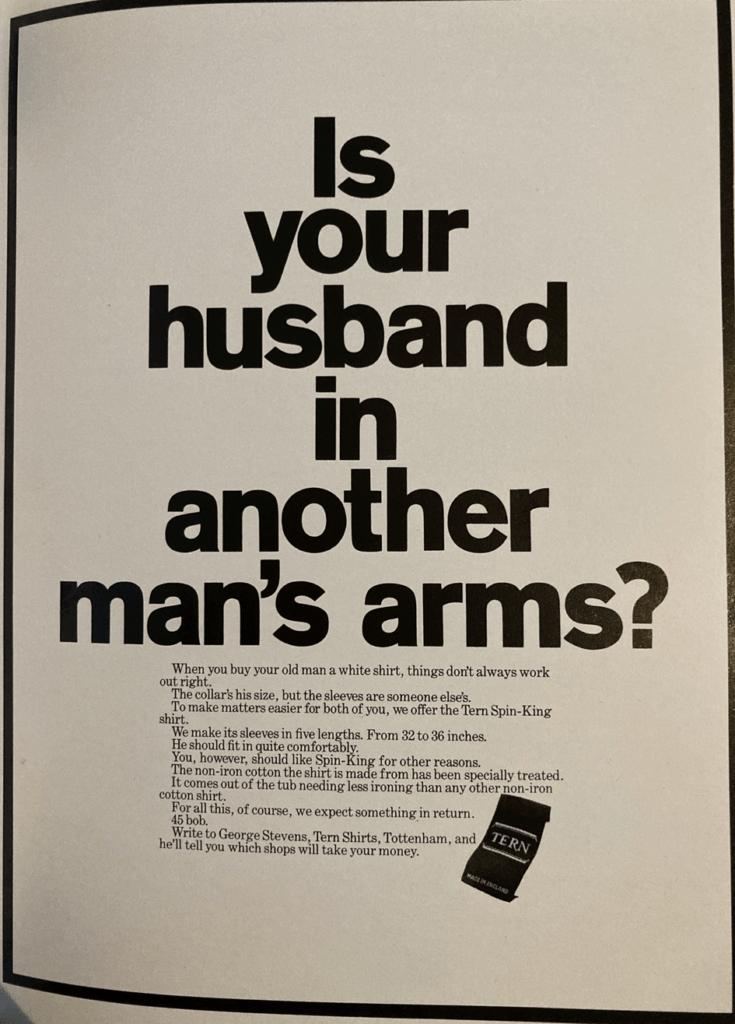
With that headline, everyone will pay attention!
Because it shocks and makes us stop in our tracks. Even if we don’t have a husband!
After that headline, the ad goes on to say that this brand of shirts has different sleeve lengths because that is what often goes wrong.
Hence your husband being in another man’s arms.
Michael Gluck was the copywriter who created this ad and I’m sure it took him a lot of discarded ideas to come up with this great one.
A tip to stand out
Do the opposite of what your competitors are doing.
If they’re making videos, make static ads.
If they take themselves too seriously, try being more loose and approachable.
Once we have the attention of our prospect we now have to get them to stay with us so we can tell them why they should buy our product or service.
Intrigue, the most effective hook
Why are series so addictive?
Because they manage to hook us with the old (but super effective) method of intrigue.
We want to keep watching them because we NEED to know what will happen.
The same goes for an ad.
If you want to intrigue your prospects you should ask yourself the following question:
– What is it specifically that makes it essential for my prospect to find out more about this and why?
And this is the solution:
✅ Offer them an interesting fact they didn’t know or a new way of getting a desired result.
Often the novelty of that new way of getting something resides in how you explain it and not really what it is.
Let me clarify this concept with an example.
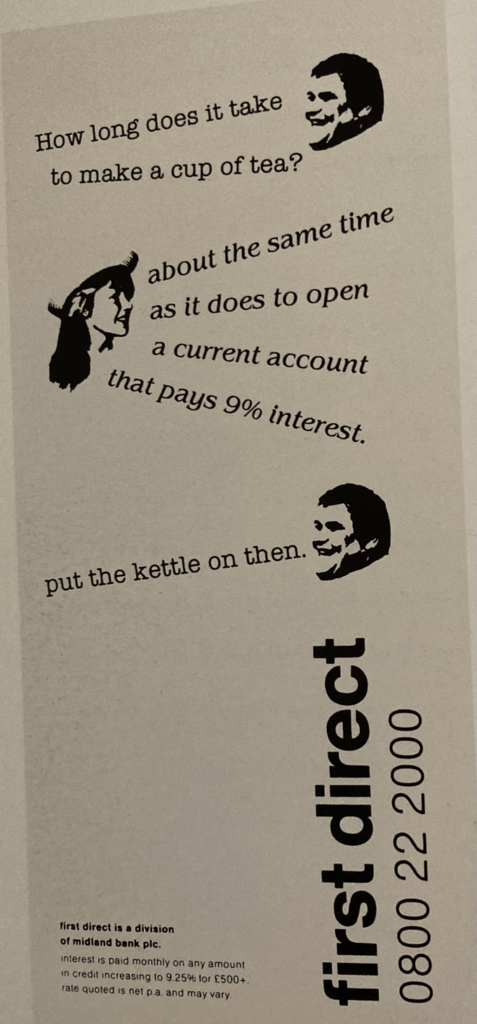
You would never have guessed that this ad is about a bank because it doesn’t follow the same ad style as all the other banks.
But why is it intriguing?
Because it starts with a very everyday question, especially in the lives of British people:
How long does it take to make a cup of tea?
The comic format of the ad makes you want to read more.
About the same time as it does to open a current account that pays 9% interest.
The above formula consisting of demonstrating the ease of a formality by comparing it to an everyday routine is tried and true.
What’s different here is that we’re more used to seeing this formula start with the action you’re trying to sell.
Like this:
It takes as long to open a BBXA bank account as it does to make a cup of tea.
But Steve Henry – the copywriter who created this ad – knows that this formula neither surprises nor engages, and has set out to turn it on its head.
He starts with the routine action we all identify with (making a cup of tea) and then moves on to the product’s main benefit, that 9% interest.
Notice that they don’t even mention the name of the bank until the very end, in big letters and with a phone number (call to action).
The difference between good copy and poor copy is that good copy emphasises the benefit to the customer, not the product itself.
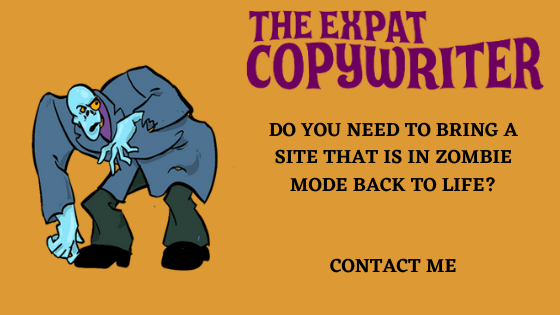
The third step. Engage your prospects to take action
Engage is a buzzword in all things marketing and sales.
Its real meaning is to stimulate your prospects by giving them a powerful reason to take the action you want them to take.
And you do it by:
✅ Giving them clear instructions on what they need to do to get the benefit they’re looking for and reassuring them that they won’t regret clicking on the link.
Think about the objections your prospects might have that prevent them from buying your product or service.
Is it the price?
Do they think they won’t use it and feel like they’re throwing their money down the drain?
Show them that they’re buying more value than what they’re paying for and remind them how your product or service is going to help them become a better version of themselves.
Remember, we all buy things to be more attractive, clever, successful, rich, free, in the eyes of others.
Let’s look at an example to clarify this point.

This is not an ad per se, but it could be the last part of one.
Ampliance is a platform that helps online shops sell more with simple tools.
In the image above, they encourage their prospects to book a demo by reminding them of the big benefit they get:
Bye-bye bad shopping experiences.
And by reassuring them that they have already helped more than 400 brands win.
This image sums up the final principle of our Engage formula:
Give prospects compelling reasons to take that action – book a demo.
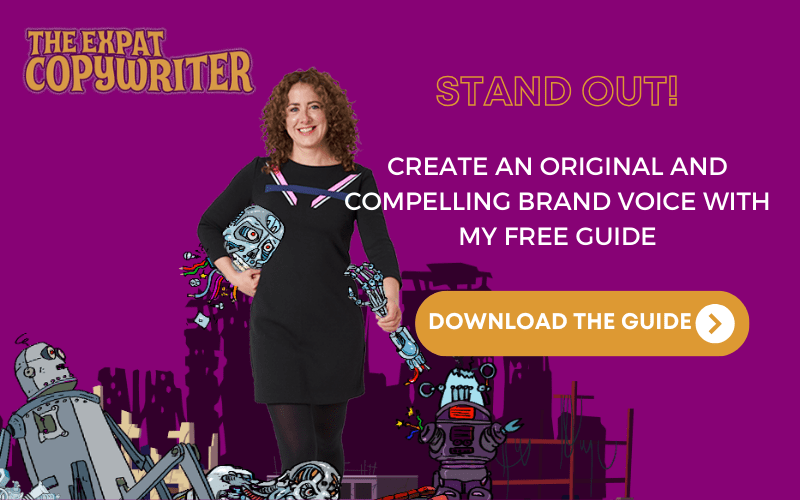
Wrapping up
Many brands are now embracing video, and yes, it works.
But a well-thought-out static ad that follows the D.I.E. formula can work much better and it often implies a smaller investment.
Think about it.
To make people want to buy your product or service you first have to grab their attention, intrigue them and engage them to take that action that will benefit them.
If your message is attractive, they will listen to you, and whether it is attractive or not depends on how well you communicate that benefit they’ll get if they buy.
Remember:
You aren’t selling what a product or service is, but what it does and the result it brings.
So always think about the benefit of the benefit.
As Happy Ears has done here

This ad follows the D.I.E. formula to the letter.
Disrupt – It looks like an ad for a sex toy, but it’s not.
Intrigue – What saved their marriage?
Engage – it implies a powerful reason to take action – You’ll sleep better with them on. You’ll be less irritable with your partner. Or they’ll be less irritable with you.
I hope I’ve helped you to think better about your next SM ad or post.
Get started now!

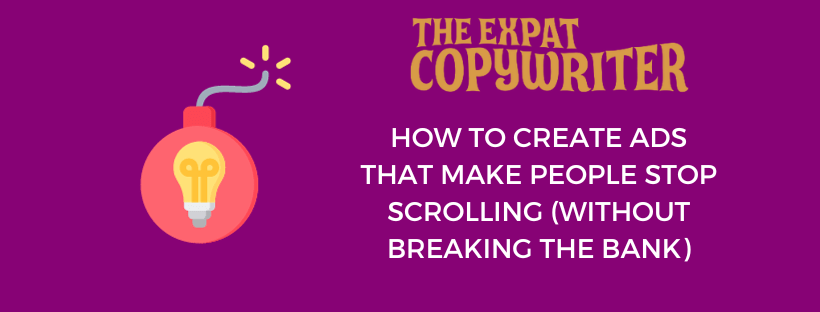
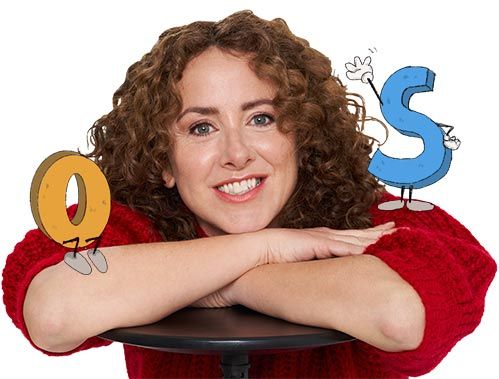
0 Comments